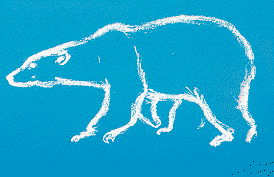
The European Arctic is clearly affected by
human activity. The region has been seen as an area of unlimited
harvesting, into which nuclear wastes and other contaminants could be
deposited. The Kola Peninsula is affected by heavy industrial pollution
and military installations. Intensive fisheries have resulted in
over-exploited key stocks, and long-range pollutants threaten even High
Arctic species. Still, the European Arctic is first and foremost an
area with values unique in Europe. There are large, nearly pristine
wilderness areas and nearly intact ecosystems. Many habitats and animal
populations are far less affected by man then elsewhere in Europe, and
the marine ecosystems are highly productive.
By giving a brief overview of the
environmental status in the European Arctic, the report aims at
increasing the awareness of the region. In a world where areas
unaffected by man are rapidly decreasing, the value of the European
Arctic wilderness will, if properly managed, only increase in the
future.
Table of Contents
Preface
Acknowledgement
- Regional climate
- Topography
- Oceanography
- Hydrology
- General characteristics
- Marine ecosystems
- Terrestrial ecosystems
- Freshwater ecosystems
- Human population
- Main human activities
- Introduction
- Wilderness quality
- Species abundance and diversity
- Pollutants - contents and effects in the environment
- Environmental issues of human health
- International environmental programmes
- Research co-operation
- International Arrangements for the Protection of the European
Arctic Environment
- Threats
- Human activities; future environmental challenges
- Long term goals
- Objectives and actions
References
Appendix
|
|
|
The State of the European Arctic
Environment.
EEA Environmental Monograph no.
3
Editors: John Richard Hansen, Rasmus Hanson
& Stefan Norris
Prepared by: Norsk Polarinstitut
Published by: European Environment Agency, Copenhagen, 1996
ISBN: 92-827-5775-7
Price: ECU 20 (Excluding VAT)
|


Document Actions
Share with others